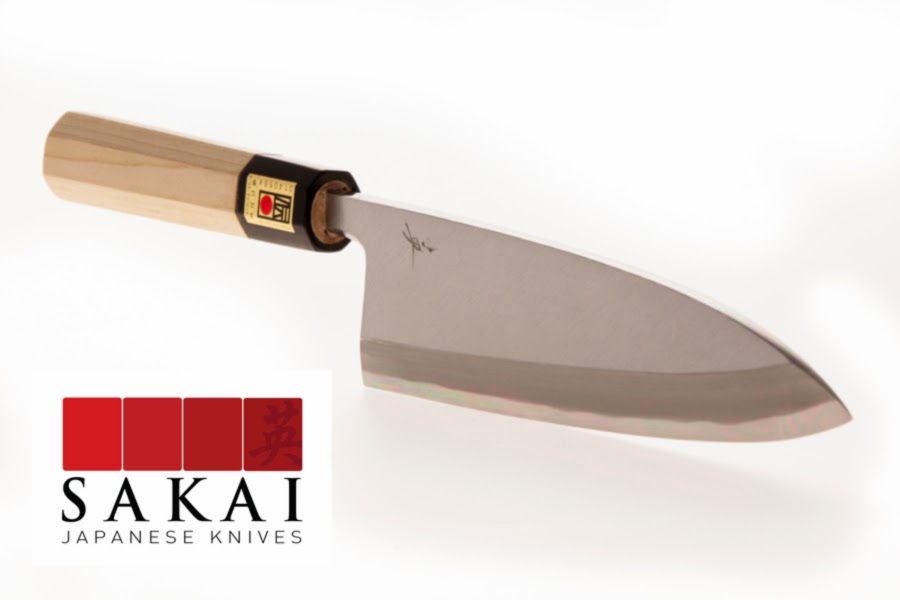You
may or may not know that I do handle repairs for kitchen knives.
Recently I was asked if I could repair a Kurkri or spelled
Khurki. A Kurkri is a Nepalese knife. This is an example of well made Kurkri.
It
was a souvenir a client pick up backpacking though Nepal. It was not
the best example, probably made exclusively for traveler as
souvenirs. But after lugging the heavy piece of steel around with him
for months it ended up representing something more than just a knife.
After talking with the client I got the impression that it
represented the experienced during his travels. Holding the knife and
feeling the weight of the steel, reminded him of what seemed to be a
important time in his life. I don't know any of the is for sure, it
is how I interpreted the conversation. Either-way, I was sure the
object had meaning to him.
The
handle was made of hollow horn, it was dry cracks and originally
poorly fitted. I told the client I would see if I could dig up some
walnut to replace the handle to come as close to the color of the
horn that was almost black. The brass Bolster and heal of the handle
were also thin, hollow, abused and misshaped. So I had to replace
them too. I had lots of brass at home so it would not be a problem.
Eventually I also found a piece of purple heat wood. A bit warmer in
color than the walnut but much harder, and more practical. The client
mentioned he wanted to use the knife.
The
knife clearly had meaning for the client so I wanted to treat the
object with respect. So I would try to mach up and improve without
changing the visual integrity of the knife. I also did not know who
made the knife. Even though it might have been mass-produced for a
souvenir sales, the knife was clearly hand made and it was easy to
see traces of the craftsmen. Who knows what kind of tools the
craftsman had or the conditions we worked under. As long as I did not
know I chose to regard the maker with the same respect as the owner.
This is a photo of the original blade, handle and brass ferrule.
* (photos taken on an iPhone 3)
* (I am NOT a "Slöjdare" I sharpen and repair kitchen knives.)
Removing the handle and cleaning up the tang.
Brass
parts to manufacture from solid brass. ( I enjoy brass. It is
soft and easily shaped, but still has weight and a wonderful warm, golden luster) In most cases it compliments wood well.
 |
| Parts |
I mark the shape of the replacement part, cut, file and sand.
The
original ferrule was thin and worn. I replacement bolster should not be perfect, so the overall aesthetics of the knife
would not be disturbed . As I mentioned earlier I wanted to consider and respect the intrinsic value of the object.
Not being a “Slöjdare” the hardest part was drilling and centering the tang of the knife's blade. It had to coincide with the form and bend of the handle as well as the new solid brass bolster as well as the heal or but cap. I worked slow and eventually found a nice fit.
Then cut the ruff form with a hand saw before the glue up.
Because of the curved blade and angle of the heal, custom blocks and extra clamp has to be used.
 |
| Glue up |
I
went “old school” on the handle . A series of vertical cuts to
the right depth then a sharp chisel to remove the waste. This is an old way of removing wood that I find enjoyable. Using a sharp hand
saw, and a well polished chisel combines a very rough method and
delicate technique.
Then
shaping with a rough file.

Then sanding.
After
sanding the shape to a point and was happy with. The client wanted
the same markings on the handle. On the original knife the markings
were a bit crude and uneven. I wanted wanted to imitate this without
it looking like a poorly done job. It was hard to find the right balance.
With the sealant I went old school once again with a Swedish pure cool pressed linseed oil mixed with pure spirits of gum turpentine and adding bees wax at the end.
I
was quit please that I could use the original brass part to rivet the
end of the tang to the heal. It made if feel a little more like an
restoration rather than a repair.
I
also left some small light scratches so the handle and it's new part
would not feel like replacement part but blend in with the intrinsic
value of the knife.
 As
you can see in this close up the blade is uneven with small pits and
waves. Because of this it was difficult to sharpen. The edge should be in a perfect line to get the most from your cut.
As
you can see in this close up the blade is uneven with small pits and
waves. Because of this it was difficult to sharpen. The edge should be in a perfect line to get the most from your cut.
Over all it was a fun project and was glad to restore a meaning full object to a client. Also making an old tool comfortable and useful again.



















Leather Furniture repairs Surrey and renovation in Surrey. We are trained in all aspects of Furniture repairs Surrey , Sofa repairs Surrey,Upholstery repairs Surrey and Leather restoration.
ReplyDelete